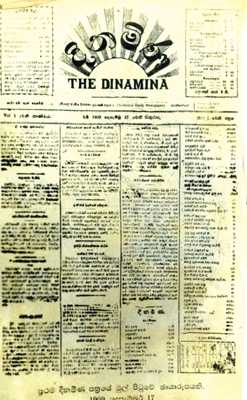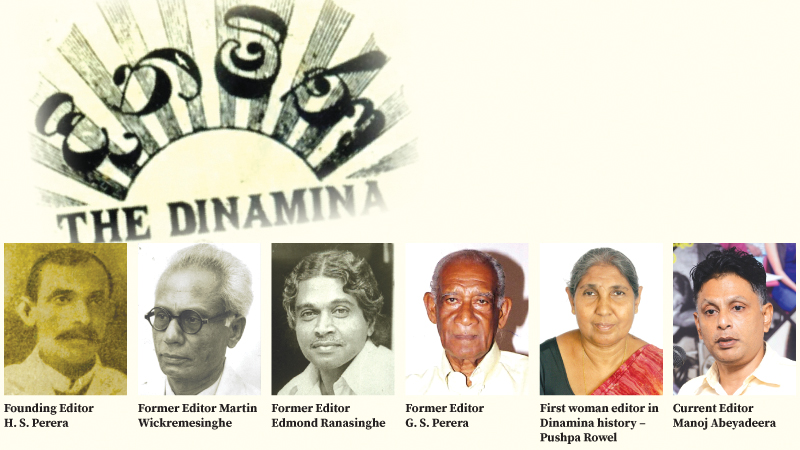The Lake House Sinhala daily The Dinamina, with a legacy spanning over a century, has played a pivotal role in representing and fostering the cultural and artistic heritage of Sri Lanka. Tomorrow (December 18), the Dinamina turns 114 years and cements its place as the oldest mainstream Sinhala daily in publication. One should take this opportunity to express gratitude to Lake House founder D.R. Wijewardene who laid the foundation for Dinamina to gain its present fame.
Its unique contribution lies in providing a friendly platform for literary artists and nurturing the potential of the Sinhala language. Throughout its long history, Dinamina has laid down writing rules and styles, pioneering accuracy in journalism and creating an ideal platform for unbiased debates on language use.
 From its inception, Dinamina has been a breeding ground for pioneers in Sinhalese literature and journalists dedicated to the language. Notable figures like H.S. Perera (the founding editor), Dodanduwe Dharmasena, and veteran novelist Martin Wickramasinghe, among others, have left an indelible mark on the newspaper’s rich history.
From its inception, Dinamina has been a breeding ground for pioneers in Sinhalese literature and journalists dedicated to the language. Notable figures like H.S. Perera (the founding editor), Dodanduwe Dharmasena, and veteran novelist Martin Wickramasinghe, among others, have left an indelible mark on the newspaper’s rich history.
Former editors including M.C.F. Perera, Alexander Welivita, Piyasena Nissanka, G.S. Perera, Victor de Lanerolle, and many more have contributed significantly. Dinamina’s first-ever woman editor was Pushpa Rowel, while present editor Manoj Abeyadeera has introduced many novel features to attract the readers.
During the 1950s-60s, Dinamina gained popularity among readers, thanks to its literary supplements. The newspaper generously allotted space for poems, short stories, and creations of new writers, introducing the Sinhala reader to the popular literature of both the West and the East. Dinamina played a crucial role in bringing formal short stories with Western literary characteristics to its pages, publishing Martin Wickramasinghe’s first short story, Abirahasa (The Secret), in April 1924.
Established writers
The literary supplements not only showcased established writers but also served as a platform for emerging talents. G.B. Senanayake, Somaweera Senanayake, K.G. Karunathilaka, Somadevi Parana Yapa, and many others began their literary careers at Dinamina. Award-winning poet Dayasena Gunasinghe and prominent lyricists like Deltota Chandrapala and Dharmasiri Gamage are part of the newspaper’s rich literary heritage. Dinamina’s contributions extend beyond literature to cinema, with Professor M.H. Gunathilaka founding the cinema page. The newspaper hosted the country’s first film awards in 1956, marking a significant milestone in popularising Sinhala cinema, before both Sarasaviya and Presidential Film Awards came to the scene. Jayavilal Vilegoda’s film reviews were instrumental in the advancement of Sinhala cinema, and Dinamina continued to contribute to local cinema, stage, and teledrama.
Crucial role
In the pre-Independence era, Dinamina was one of the four institutions that ruled Sri Lanka, Dr. Sarath Amunugama once said. It has played a crucial role in shaping political leaders and understanding its national responsibilities. After becoming a State-centric newspaper in 1973, the Dinamina has faced various criticisms, but it has consistently preserved the traditions of the country and nurtured them.
Dinamina’s century-long journey reflects its unparalleled contribution to literature, language, cinema, and national development. It has been a pillar of support for artists, writers, and intellectuals, fostering a legacy that continues to shape the cultural landscape of Sri Lanka.




